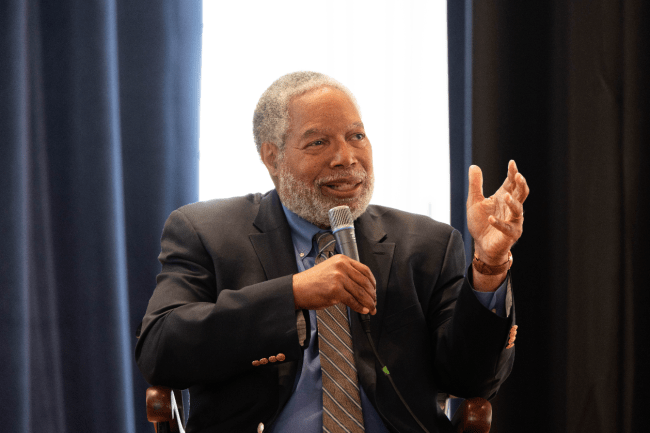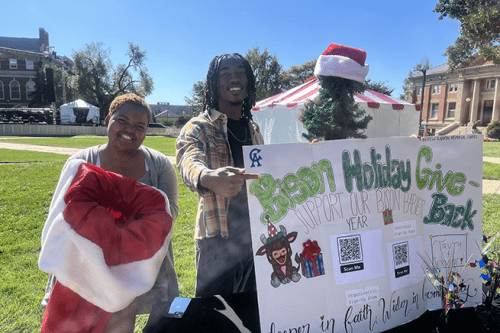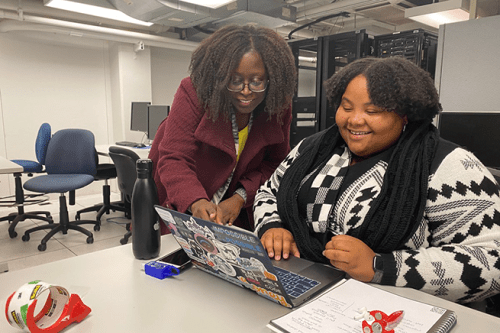Dr. Lonnie G. Bunch III (HU '74), secretary of the Smithsonian Institution and the founding director of the National Museum of African American History and Culture, returned to his alma mater, Howard University, for a deeply reflective and candid conversation about race, culture, and the role of museums in shaping historical memory.
The scene was like a family reunion of art curators, sculptors and art historians who greeted one another with a warm embrace in the usual Howard manner. This was an opportunity for old friends to rub elbows and reminisce. However, Bunch's visit was more than a homecoming; it was a powerful moment of exchange between a groundbreaking cultural leader and the next generation of Black historians and artists.
Speaking before a full room of students and faculty from the Chadwick A. Boseman College of Fine Arts, Bunch spoke of his formative experiences as a student living in Slowe Hall and discovering African American history for the first time in Founders Library. “Howard is fundamental,” he said. “I’m sitting in this chair because of Howard University.”
“I’m just a kid from Jersey,” Bunch remarked. But this “kid from Jersey” was the sole driving force behind envisioning, The National Museum of African American History and Culture (NMAAHC), a Black historical sight that would shake the entire world. His insights revealed the personal experiences that shaped his pursuit of fairness and justice through public history, including a painful childhood memory of racial exclusion that inspired a lifelong search for understanding through history.
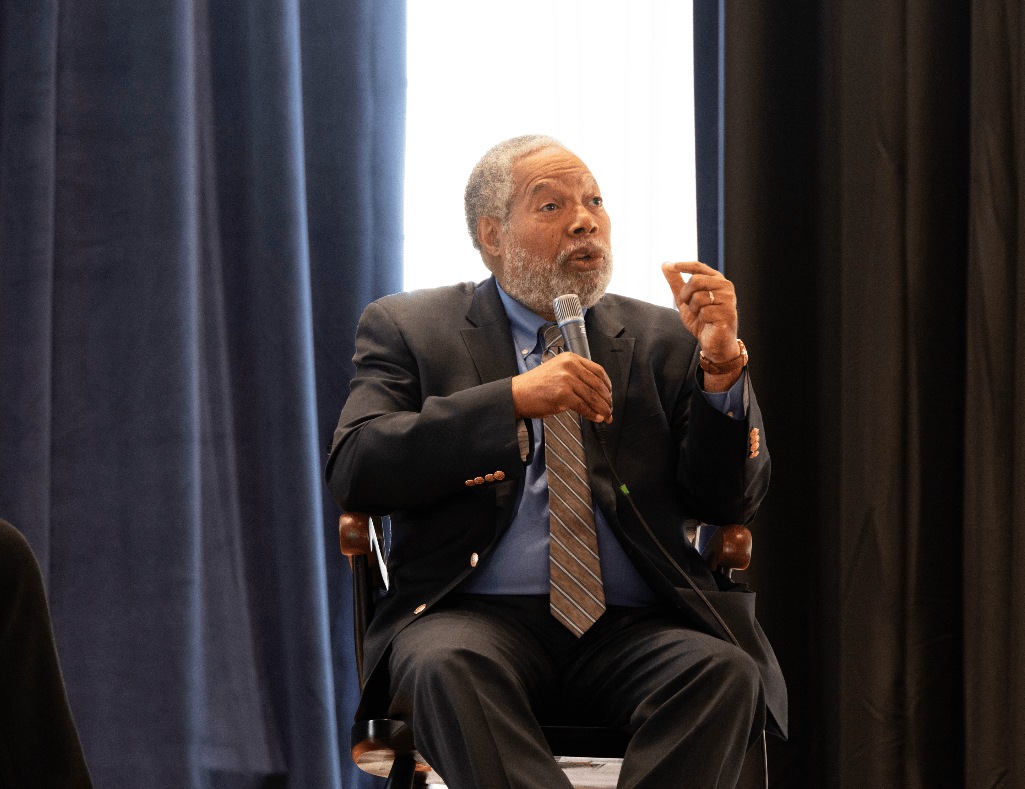
As the head of 21 museums, 21 libraries, and multiple national education centers, Bunch emphasized the critical role of culture in a world facing crisis and division. “Culture is the glue that holds everything together,” he said. “It’s how communities come together, how we express concern, love, passion. It’s the work that protects people.”
“When he was made director of the National Museum of African American History and Culture, he had nothing — he had one employee, no land, no collection, nothing,” said Raimi Gbadamosi, department chair and professor at the Chadwick Boseman College of Fine Arts. “And it took him over a decade to get the building up to the point where it is now, attracting 14 million people. Those sorts of accomplishments are stellar in themselves.”
Bunch also challenged the audience to recognize African American history not as a separate thread, but as central to the American narrative. “African American culture is the quintessential American experience,” Bunch said. “If you want to understand spirituality, resiliency, optimism, —look to this community.”
Bunch addressed the evolving role of museums amid increasing efforts to erase history. “If people try to close the African American Museum, they’ll do it over my body,” he declared, calling for collective advocacy and community action. “Cultural institutions alone can’t fight these battles, we all have to speak up.”
Dr. Bunch reflected on the profound emotional and cultural weight of curating the casket of Emmett Till for the National Museum of African American History and Culture. He recounted writing stories about the mother of Emmett till, Mamie Till, then befriending her. “The Emmett Till casket — I almost said no. I was like, ‘I can’t do this.’ I remember standing in front of the casket thinking, ‘Oh my God.’ You see the stain of his blood still in that casket, and it just hits you. And then I realized that the most powerful thing you can do is take a symbol of pain and make it a place of resilience and reflection,” he said.
Bunch described how museum visitors would come into that space (many weeping, many silent) and how people would often whisper to each other in hushed tones as if they were at a sacred site. “That casket became a pilgrimage site,” Bunch said. “People didn’t rush through. They lingered. It wasn’t just history. It was personal. It was spiritual. And it reminded me of why this work matters.”
Through this story, Bunch illustrated the emotional power of museum spaces to transform grief into a shared commitment to justice, history, and healing.
“I think at this moment in history, with all the pressures — and I can only imagine the level of pressures he’s under —; to bow to different constituencies within the country, and yet he runs an institute, keeps pushing forward,” said Gbadamosi. “He’s committed to making sure that the story of this nation and its people be told honestly and truthfully. That is very important.”
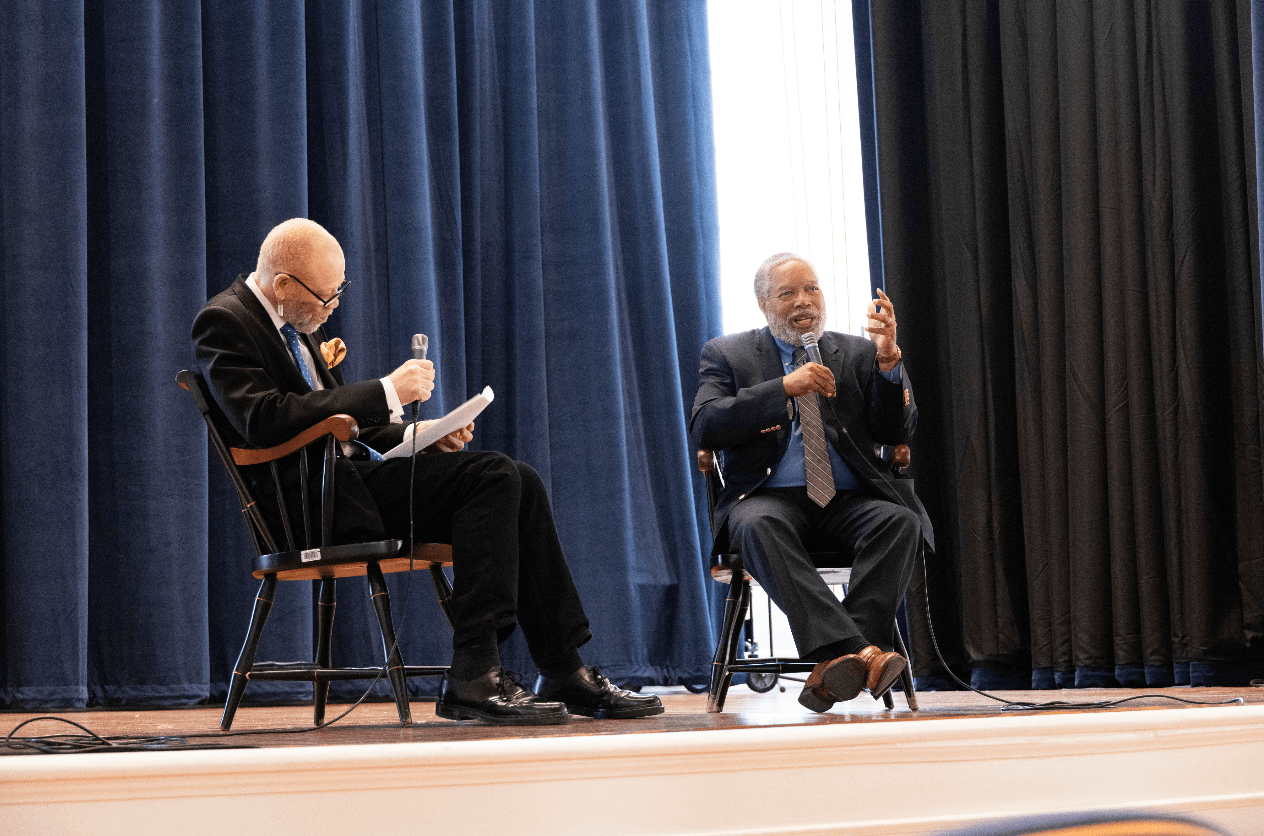
Throughout the discussion, Bunch returned to a central theme: that museums must be classrooms and places that challenge, educate, and inspire. “Museums are not about yesterday — they are about today and tomorrow,” he said. “They must be fountains of knowledge that feed justice, truth, and social progress.”
As Howard students listened, Bunch’s words served as both a call to action and a reminder of the institution’s powerful legacy in shaping leaders who carry the torch of cultural truth-telling. “Howard taught me how to fight,” Bunch said. “And that’s what I’ve been doing ever since.”
In a moment marked by political tension and cultural reckoning, Bunch urged current Howard students to get involved in whichever way suits them. The sentiment was - ‘Do something'. He urged them to curate history for the curators 50 years from now.
His return to Howard was not just a celebration of achievement; it was a reaffirmation of Black excellence, resilience, and the power of institutions like Howard University to produce leaders who redefine history.


